GOOD NEWS: Canada’s Acceptance of Refugees
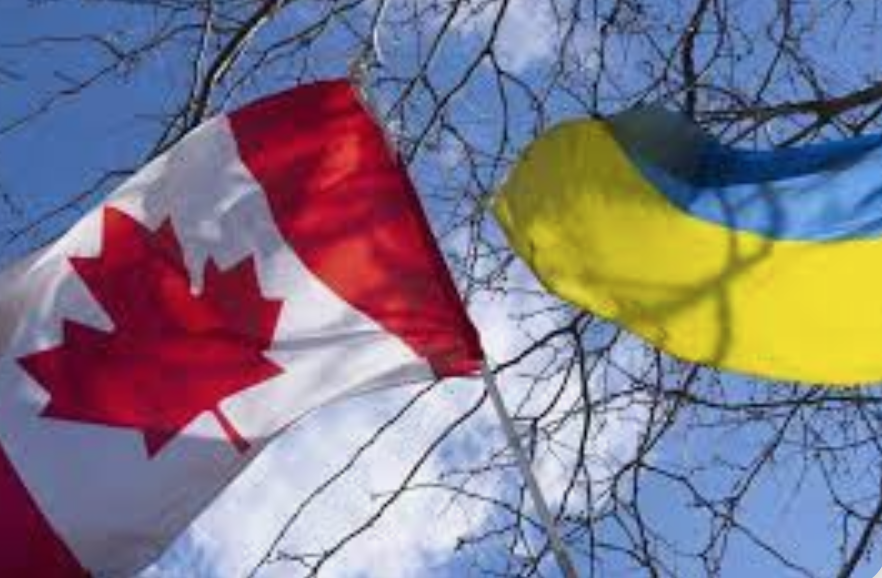
There is more good news in the world than bad
One morning Saed Farah was walking by himself to work at a local hospital. He heard gun fire close by and dove for cover. In a few moments, he was surrounded by the Syrian Police and was accused of being a terrorist.
Handcuffed, he was taken to the police station and interrogated. Three hours later he was released, badly shaken and petrified about the future. That night he and his wife Shara talked.
For over a year, bombing and fighting between government forces and rebels had been going on all around them. The building down the street had been blown apart and at their children’s school the classes had been reduced by a third. A few of the children had been tortured and sometimes the teachers did not show up.
They made a decision. They were going to leave Syria as soon as they could, along with their two children aged 9 and 11.
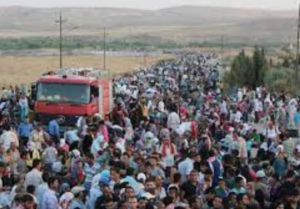
Several weeks later, the Farahs withdrew the little money they had in the bank, said goodbye to their parents and friends and set off with a driver for Jordan. Along the way they passed dozens of vehicles wrecked by mortar shells and countless signs saying “DANGER – LAND MINES.” After many hours they reached the refugee camp in Jordan, where they joined 38,000 other refugees.
They were given a tent complete with food, cooking equipment, cots and sleeping bags. The camp was well run, led by U.N.H.C.R. (United Nations High Commissioner for Refugees), and several aid agencies including CARE INTERNATIONAL.
The agencies provided for many of the refugees needs: schooling for the children, recreation facilities, health care, self-help improvement opportunities – including learning English – and an employment centre where they were fortunate to find part-time work outside of the camp.
They spent considerable time talking with other refugees, many of whom had been there for years. In spite of these facilities, they felt sad, trapped and at times without hope.
They learned about a group of men who would take them on a dangerous crossing by boat from nearby Libya to Sicily and hoped for entry into a European country at a cost of $3,000 per person: money they did not have.
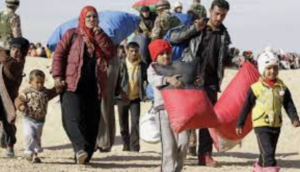 They also learned that countries like Canada, and Australia (the U.S. had ceased taking in Syrians) were accepting refugees, however, it was a long, drawn out process. They decided to try to immigrate to Canada because their cousin had gone there several years ago, and Canada had a good sponsorship programme.
They also learned that countries like Canada, and Australia (the U.S. had ceased taking in Syrians) were accepting refugees, however, it was a long, drawn out process. They decided to try to immigrate to Canada because their cousin had gone there several years ago, and Canada had a good sponsorship programme.
It took many months to do all of the paperwork, but finally two years after they started the process they were told a church group, near Toronto would sponsor them to come to Canada. Four weeks later they hopped on a plane bound for Canada.
They had never been on a plane before and after the initial fear of being in a noisy oblong box 30,000 feet in the air, they fell asleep.
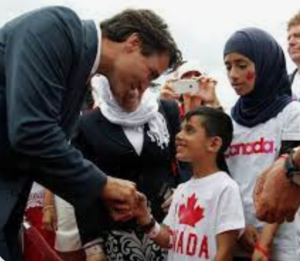
At the airport in Toronto they were met by their sponsors, holding warm coats and a big sign with their name on it, welcoming them to their new life in Canada. They were quickly overcome by their emotions and broke into tears, triggered by what they had come through,the fear, uncertainty and excitement about their new life and the overwhelming kindness of these strangers.
They were taken to the sponsor’s home where they stayed for 10 days. The sponsoring group had arranged for an apartment and furniture. They worked with them to help them become integrated into the community, arranged schooling for their children and health care. In addition, the sponsor helped them find a mosque and facilitated meeting people, including other Syrians.
They helped Saed find employment in a privately-run retirement home close by and helped Shara learn the transportation system and shop for food. They also arranged ESL classes for Shara and eventually employment at a local Tim Horton’s.
The children quickly made friends, and a few months later, people sponsored the children to go to summer day camp. Saed, with his experience working in the medical system in Syria, was able to start as a Personal Service worker (PSW) and work towards becoming a nurse, and eventually a nurse practitioner.
All of this put huge smiles on their faces and gave them HOPE.
They did have challenges though. They missed their families and friends terribly, it took them a long time to get used to the cold and in spite of the system guaranteeing their income for a year, they felt very poor and struggled with the banking system. Sadly, from time to time, the odd person would tell them to go home, they were not wanted here. In spite of the ESL programme, they struggled with English and navigating everything by public transit was difficult.
Theirs is a happy story and in spite of the challenges, the Farahs now had hope and were excited by their opportunities. They also had immense gratitude for the caring provided by the sponsoring group and others. The sponsors too were very happy because of the new life and opportunities they were able to help provide the Farahs.
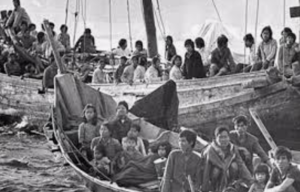
Canada and other counties have been welcoming refugees for hundreds of years. More recently, Canada and the U.S. (until recently) have welcomed waves of people to their countries. This included destitute people after both World Wars, Jewish people fleeing Nazi Germany, boat people from Vietnam, people left homeless and hungry as a result of war, drought and famine from such places as Sudan, Somalia, Ethiopia, Rwanda, Burundi, Sierra Leone, Afghanistan and the Ukraine… maybe some of these people are your ancestors.
Most of these refugees have made outstanding contributions. Here are a few of the more famous ones, starting with the U.S.A.:
Albert Einstein, Scientist and discoverer of the theory of relativity, former U.S. Secretaries of State Henry Kissinger and Madeline Albright, whose families escaped from the Nazis, investor and philanthropist George Soros, famed Olympic gymnast Nadia Comaneci, ballet dancer extraordinaire Mikhail Baryshnikov and Sergy Brin, the billionaire co-founder of Google, all escaped from the oppression of communism, and The Dalai Lama who escaped to India when the Chinese took over Tibet.
Canada has had its share: Photographer Yusuf Karsh, who at one time was considered to be the best portrait photographer in the world, came as a result of the Armenian genocide. Somali-born Ahmed Hassen, who became Canada’s Minister of Immigration came to Canada, as well as Canada’s best soccer player Alphonso Davies who was born in a refugee camp in Ghana. His parents had escaped from the civil war in Liberia.
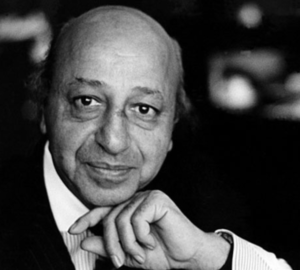
Not all refugees will become famous and not all will be successful, but on the whole, they have become outstanding citizens and contributors to Canada and other countries. Other immigrants come too.
In 2022 Canada will welcome approximately 400,000 immigrants, of which between 55,000 and 80,000 will be refugees. Canada has announced we want to increase this to 500,000, in part offsetting a declining birth rate.*
In the short run it will cost Canada money, add to already long waits for prospective newcomers, put a strain on our housing, possibly take jobs and increase racial tensions.**
In the long run it will boost our economy, bring skills and diversity and provide freedom, hope and opportunities for the thousands who come.
Canada has been praised around the world for our compassionate immigration policies and acceptance of refugees. All of these people have come seeking opportunities and a better life. As a country we have provided this for most of our immigrants. As a Canadian I am proud to be a part of this. Are you?
We are all better for it … and that is good news.
Till next time,
Chris Snyder
I welcome your comments and ideas: chris@eccgroup.ca
Please pass this along to anyone who might benefit from this GOOD NEWS BLOG
*According to the U.N., currently there are more than 85 million displaced people in the world, the highest number since the end of WW2. Bringing in immigrants is part of the solution. The better solution is improving conditions in the countries some people must remain in.
**Currently there are 1.2 million people who have applied for entrance into the country. Affordable housing is already a big issue and could become bigger with increased immigration. Statistics show the unemployment rate for refugees is the same as for the rest of the population. Racial tension to date has been modest.
You May Also Like

Saying Positive and Supportive Things to Others
August 13, 2023
Cambodia!
January 13, 2019